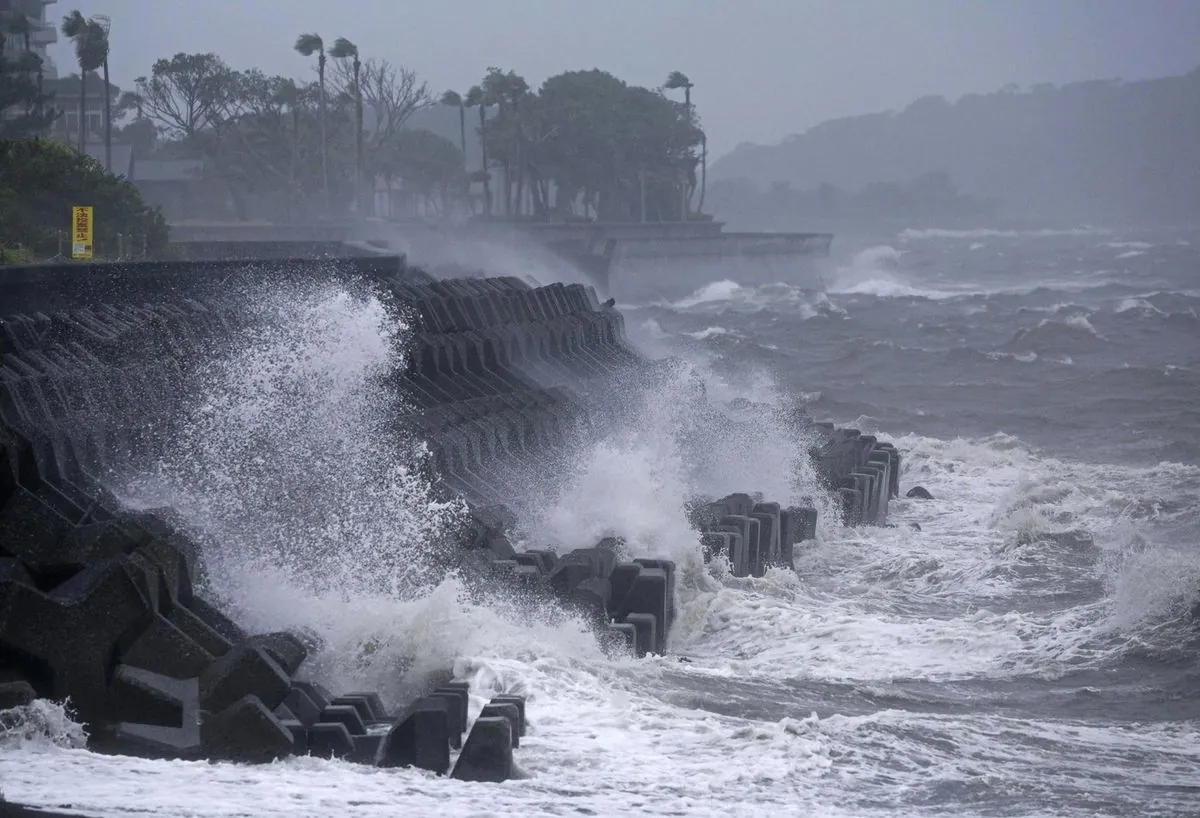Approximately two months ago, Japan faced the wrath of Typhoon Shanshan, a powerful storm that struck the southwestern region, leading to widespread disruptions and prompting authorities to issue evacuation orders for millions of residents.
The typhoon, with wind speeds reaching up to 180 km/h (112 mph), caused significant damage across the affected areas. Tragically, three individuals lost their lives, and 45 others sustained injuries in incidents related to the storm. Yoshimasa Hayashi, Japan's Chief Cabinet Secretary, confirmed these figures during a news conference.
The impact on Japan's industrial sector was substantial. Toyota, the country's largest automobile manufacturer producing over 10 million vehicles annually, suspended operations at all its domestic plants. Other major companies, including Nissan, Honda, and chipmakers Renesas and Tokyo Electron, also halted production at some facilities.
The storm's ferocity was evident in the accounts of local residents. Tomoki Maeda, a funeral parlor employee in Miyazaki city, southern Kyushu, described his experience:
"I've never experienced such a strong wind or tornado in my 31 years of life."
Kyushu, the third-largest of Japan's four main islands, bore the brunt of the typhoon's impact. Approximately 230,000 households across seven prefectures experienced power outages. However, the Sendai Nuclear Power Plant in Satsumasendai city, one of the first to restart after the 2011 Fukushima disaster, reported no impact from the storm.
Japan's comprehensive disaster management system, considered one of the world's most advanced, was put to the test. Over 5.2 million people received evacuation notices, highlighting the scale of the potential threat. The country's extensive coastline of over 18,000 kilometers makes it particularly vulnerable to typhoons and tsunamis.
Transportation networks faced significant disruptions. Airlines, including ANA Holdings and Japan Airlines, cancelled nearly 800 flights. Train services, including parts of the renowned Shinkansen bullet train network, were suspended in many areas of Kyushu. Hundreds of bus and ferry services also ceased operations.
As Typhoon Shanshan moved northward, meteorologists predicted it would approach central and eastern regions, including Tokyo, home to approximately 30% of Japan's 125 million population. This forecast raised concerns about potential impacts on the country's most densely populated areas.
It's worth noting that Japan experiences an average of three typhoons making landfall each year, with the typhoon season typically running from May to October. While Shanshan's impact was severe, it did not surpass the devastation caused by Typhoon Vera in 1959, which remains the strongest typhoon to hit Japan, resulting in over 5,000 fatalities.
As Japan continues to grapple with the aftermath of Typhoon Shanshan, the incident serves as a stark reminder of the country's vulnerability to natural disasters and the critical importance of its advanced early warning systems and disaster preparedness measures.
